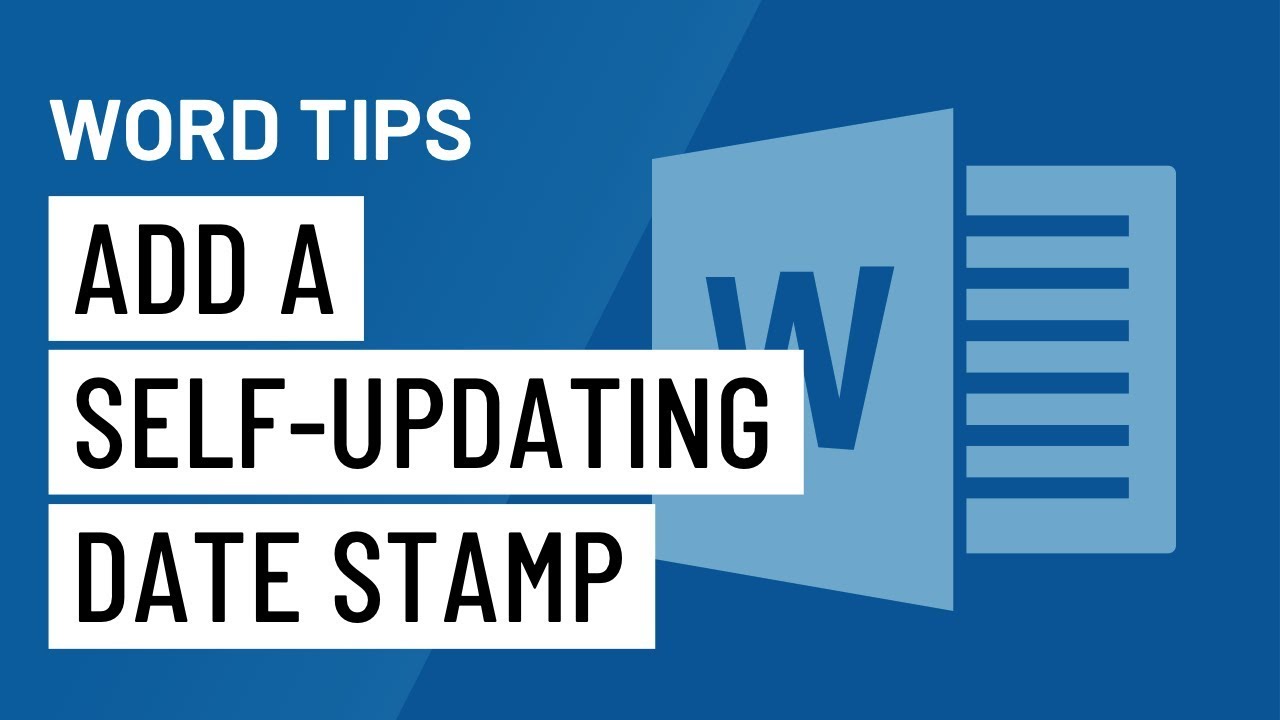
In the realm of document creation and management, Microsoft Word stands as a cornerstone tool, offering a plethora of features to streamline workflows and enhance productivity. Among these features, the ability to add a self-updating date stamp to your document holds significant value, ensuring that your documents always reflect the latest date without manual intervention. In this extensive guide, we will delve into the intricacies of adding a self-updating date stamp to your document in MS Word, exploring step-by-step instructions, tips, and best practices to empower you in harnessing this powerful feature.
Understanding the Importance of a Self-Updating Date Stamp:
A self-updating date stamp serves as a dynamic indicator of the document’s creation or modification date, ensuring accuracy and consistency across various versions and iterations. By automatically updating to reflect the current date each time the document is opened or printed, a self-updating date stamp eliminates the need for manual updates and reduces the risk of errors or discrepancies. Whether you’re creating reports, proposals, or other time-sensitive documents, incorporating a self-updating date stamp can streamline your workflow and enhance document management efficiency.
1. Adding a Self-Updating Date Stamp Using Fields:
Microsoft Word offers a powerful feature called “fields,” which allows users to insert dynamic content, including dates, into their documents. Here’s how to add a self-updating date stamp using fields in MS Word:
- Place your cursor at the location in the document where you want the date stamp to appear.
- Navigate to the “Insert” tab in the MS Word ribbon.
- Click on the “Quick Parts” dropdown menu.
- Select “Field” from the dropdown menu to open the Field dialog box.
- In the Categories list, select “Date and Time.”
- In the Field names list, select “Date.”
- Choose the desired date format from the options provided.
- Check the box next to “Update automatically” to enable the self-updating feature.
- Click “OK” to insert the date stamp into your document.
2. Customizing the Date Format and Appearance:
In addition to adding a self-updating date stamp, MS Word allows users to customize the date format and appearance to suit their preferences and document requirements. Here are some customization options you can explore:
- Date Format: Choose from a variety of date formats, including short date, long date, and custom formats (e.g., “MM/DD/YYYY” or “DD/MM/YYYY”).
- Time Format: Optionally include the time component in the date stamp by selecting the appropriate format from the Field dialog box.
- Font and Style: Modify the font, size, color, and style of the date stamp to match the document’s overall design and aesthetic.
3. Updating the Date Stamp Manually:
While the self-updating feature ensures that the date stamp reflects the current date whenever the document is opened or printed, users can also update the date stamp manually if needed. To update the date stamp manually, simply right-click on the date stamp field and select “Update Field” from the context menu. This action will refresh the date stamp to display the current date and time.
4. Considerations and Best Practices:
When adding a self-updating date stamp to your document in MS Word, consider the following best practices to ensure optimal performance and accuracy:
- Document Compatibility: Be mindful of the document’s compatibility with different versions of MS Word and other word processing software. While self-updating date stamps are fully supported in MS Word, compatibility may vary in other applications.
- Field Locking: To prevent accidental modifications or deletions, consider locking the date stamp field after inserting it into the document. You can do this by selecting the date stamp field, right-clicking, and choosing “Toggle Field Codes” to switch to field code view. Then, press “Ctrl + F11” to lock the field.
- Document Protection: If your document contains sensitive or confidential information, consider protecting it with a password or restricting editing permissions to authorized users only.
Conclusion:
In conclusion, adding a self-updating date stamp to your document in MS Word is a simple yet powerful feature that enhances accuracy, efficiency, and professionalism. By leveraging the dynamic capabilities of fields, users can ensure that their documents always reflect the latest date without manual intervention. Whether you’re creating reports, contracts, or other time-sensitive documents, incorporating a self-updating date stamp streamlines your workflow and improves document management practices. With the step-by-step instructions, customization options, and best practices outlined in this guide, you can confidently implement self-updating date stamps in your MS Word documents, empowering you to create polished and professional documents with ease.